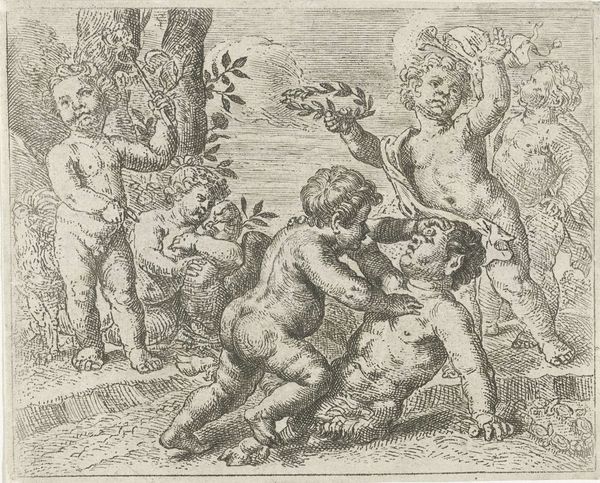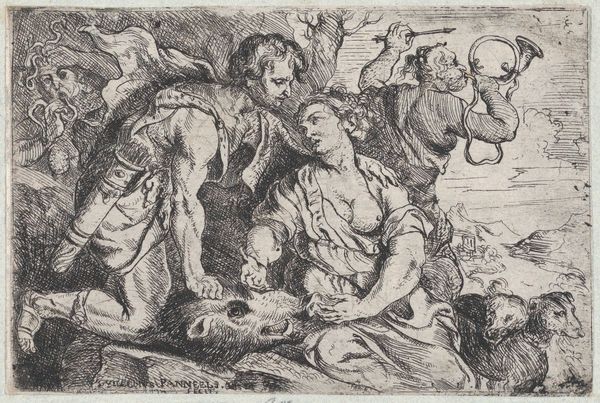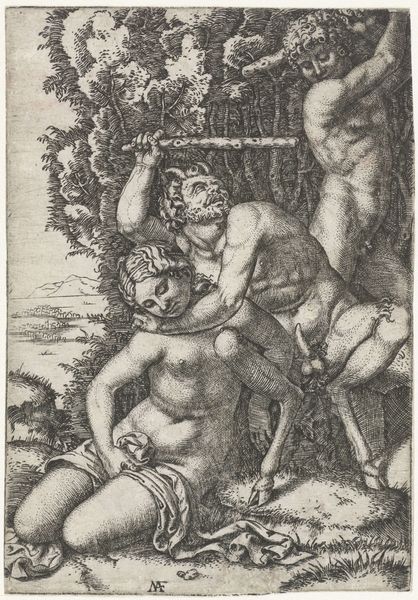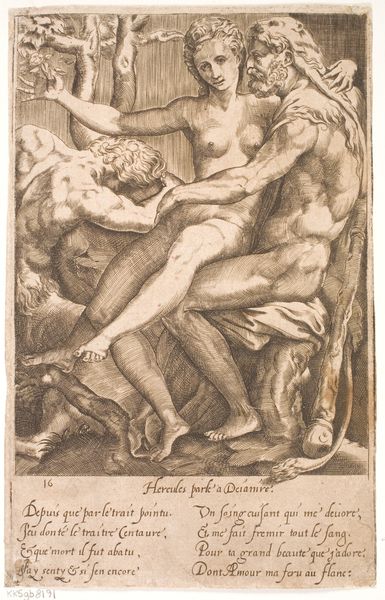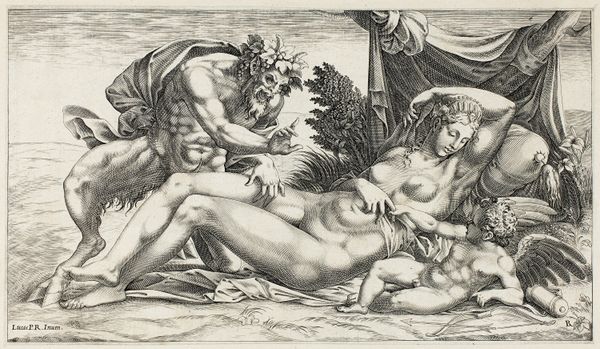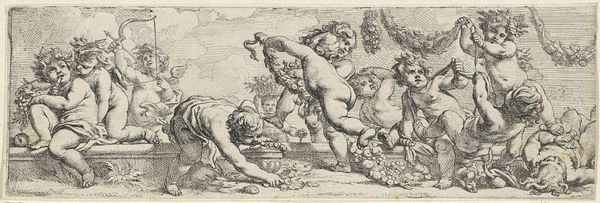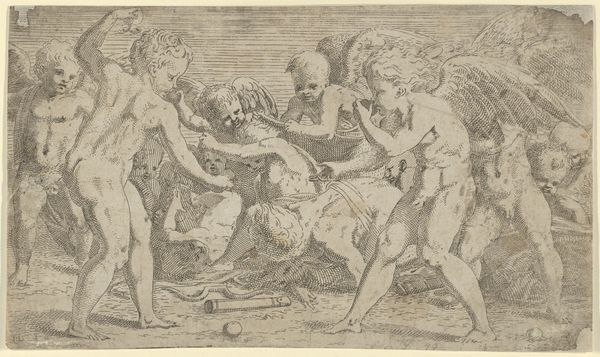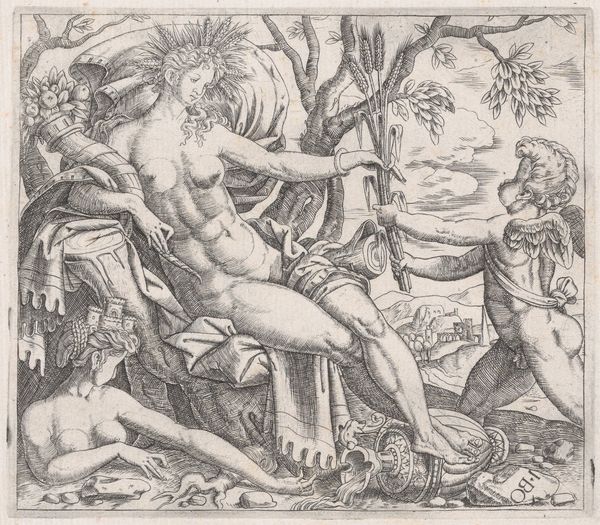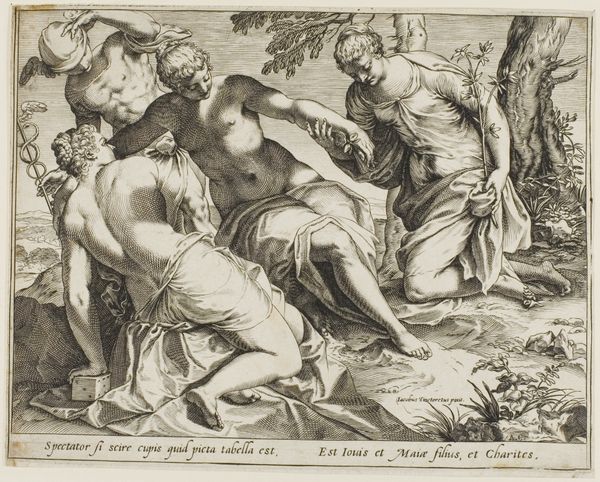
Nude children eating grapes and playing with a goat; an allegory of Fall, after a bas-relief on the Fontaine des Quatre-Saisons (Paris) 1745 - 1800
0:00
0:00
Dimensions: Sheet (trimmed): 7 1/8 × 8 1/4 in. (18.1 × 21 cm) Image: 4 3/4 × 7 11/16 in. (12 × 19.5 cm)
Copyright: Public Domain
Curator: Immediately, what strikes me is this bustling sense of childish joy—a playful tumble of bodies intertwined with a surprisingly rambunctious goat. Editor: Indeed. This is "Nude children eating grapes and playing with a goat; an allegory of Fall, after a bas-relief on the Fontaine des Quatre-Saisons (Paris)," created sometime between 1745 and 1800 by an anonymous artist. It’s currently held here at the Metropolitan Museum of Art. As the title suggests, it's a depiction of autumn. The figures are rendered with exquisite detail, but of course it presents its own unique set of problems given the political turmoil surrounding child labor during this era. Curator: Problems? I see unadulterated delight, innocent abandon! It feels as crisp as that first day when you know the air has finally changed. And it is an imagined Autumnal bacchanal! It's more dream than documentation. The goat isn’t just there; it's a hairy, chaotic muse. Editor: Precisely. But to decode it further, it's useful to recall the period: this print derives its form and content from the social values prevalent at the time. Allegories, particularly those celebrating the seasons, were vehicles to express political and moral order—even within the seemingly 'natural' setting. And notice how meticulously ordered everything actually is: despite its appearance of casual spontaneity. Curator: You're probably right... it *is* stage-managed, I get your argument, and that perhaps that goat has been firmly 'cast'. Yet, look at the expressiveness in their faces—they’re lost in that moment of tactile glee, that specific taste of crushed grapes and fuzzy fur! Art reminds us to seek beauty amidst order and that our response transcends rigid interpretation, Editor: Indeed. While my appreciation lies in acknowledging art's societal function—to illuminate its purpose, contextualized by institutions that have influenced art making, perhaps the greatest purpose that it serves is what you describe; a reflection of the individual's unique perspective on both beauty, memory, and understanding itself. Curator: So perhaps we meet halfway—it’s a performance for us, and for itself? Editor: Precisely!
Comments
No comments
Be the first to comment and join the conversation on the ultimate creative platform.
